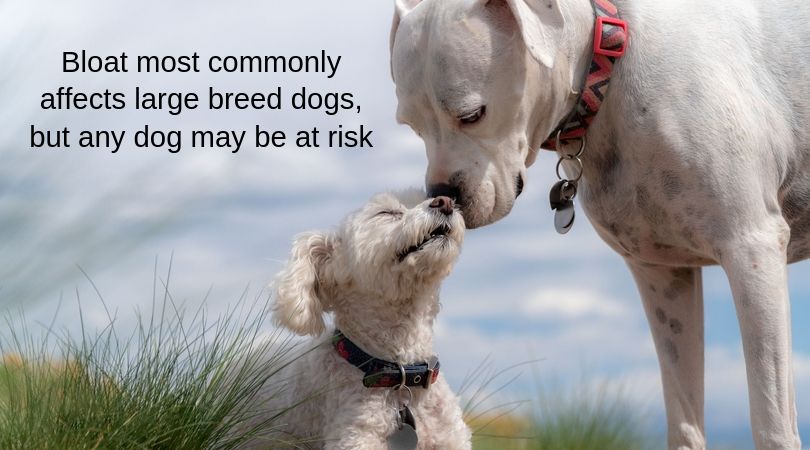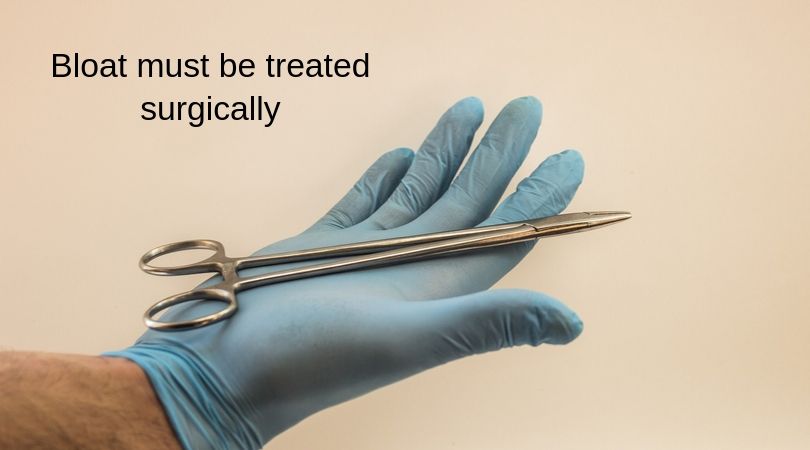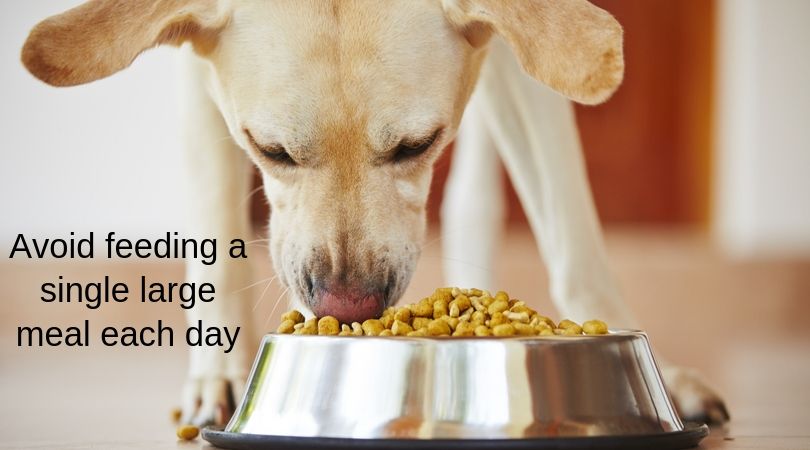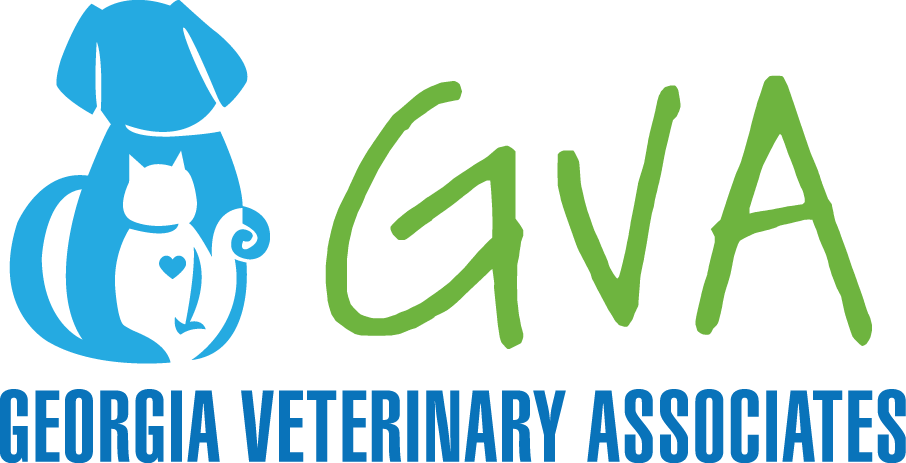Bloat in dogs is an extremely serious and dangerous medical condition that should be treated as a medical emergency. Even mild cases of bloat can turn fatal. Although the causes of bloat are still not clear, the symptoms that occur are fairly consistent and are a sign that you should seek immediate medical attention. Educating yourself on this terrible condition is the best way to help prevent it and reduce the risks to your dog, should they ever get it.
What is Bloat?
Bloat, also called gastric dilatation and volvulus, or GDV, is a condition where the stomach expands, filling with gas and fluids, and also twists on itself. It’s not clear whether the twisting occurs first and then the bloating or the other way around, but either way, this process creates a very bad situation for the dog. Once the stomach becomes distended and twisted, it puts pressure on the diaphragm, which causes problems with breathing. It also compresses the blood vessels, restricting blood flow to the stomach and return flow to the heart. Even mild cases of bloat should be regarded as an emergency situation, and you should seek treatment immediately.
Bloat most commonly affects large or giant breed dogs, especially those with a deep chest or who are tall and narrow. Great Danes, Saint Bernards, Standard Poodles, Doberman Pinschers, and Irish Setters are all at greater risk. Although these breeds are at a higher risk, no dog is completely safe, as bloat has been reported in almost every breed. Dogs with immediate relatives (parents, siblings, offspring) that have a history of bloat are at greater risk as well.

What Happens if My Dog Gets Bloat?
Signs and Symptoms
Since it’s unknown why bloat happens, it’s very important to know the signs and symptoms should it occur. The most common signs of bloat are an abdomen that appears swollen, excessive drooling, panting, fatigue without being able to sleep, and trying to vomit without actually being able to produce any vomit. Some dogs will actually make sounds to let you know they are in pain as well.
If your dog shows any of these signs and you suspect bloat, you should bring them to the emergency room immediately. Bloat can progress very quickly, and death can occur within hours of the first symptoms. There is no treatment you can do at home, and the only course of action is an emergency medical procedure by a professional veterinarian.
Treatment
Once at the emergency room, tests such as x-rays and bloodwork will be done to determine if your dog does have bloat. If confirmed, the only treatment is surgery. A surgical procedure will be done to first untwist the stomach, and then a procedure called gastropexy is done where the stomach is sutured to the wall of the abdomen to prevent it from twisting again.
Depending on the severity of the condition, there may be further procedures done to take out the spleen or part of the stomach if damaged.

It’s important to be aware that even with treatment, this condition may still be fatal. That’s why time is of the essence. The longer a dog is bloated, the worse prognosis they have. Dogs will usually remain in the hospital for a couple of days to ensure all organs return to normal functionality and the dog’s general health improves.
Prevention
If you think your dog is at risk for bloat, there are steps you can take that may help to prevent this condition.
Feeding your dog at least two meals a day or several small meals throughout the day, as opposed to one larger meal per day, greatly reduces the chances of bloat.
Fast eaters are at greater risk for bloat, so serving food in bowls with posts that slow eating or using food puzzles can help control your dog’s eating pace. It’s also important to reduce or eliminate the stress and anxiety that may be causing your dog to eat quickly. If there are other dogs in the house, separate them at feeding time. Avoid strenuous exercise and activity immediately after eating.
For diet, avoid food high in oils and fats. You may want to avoid dry kibble; your veterinarian can help you make this determination. Always provide plenty of water, and refrain from giving table scraps.
It was once thought that elevated bowls were beneficial; however, there has been no evidence to confirm this, and in some cases, it is believed to actually worsen risks because the head is forced into a less natural eating position.

Surgical Prevention
In addition to the lifestyle habits to prevent bloat, you may want to consider having a prophylactic gastropexy done on your dog. This is the same procedure discussed earlier for the emergency treatment of bloat where the stomach is attached to the abdomen wall, except this is done preemptively.
This is not recommended for all dogs, but if you have a dog that is at a high risk for bloat, such as a Great Dane, or one that has a history of it in their family, you should discuss this option with your veterinarian. If they are undergoing another abdominal surgery, such as being spayed, this procedure might be combined with it.
Consult With Your Veterinarian
As with any concerns for your pet’s health and wellbeing, please contact your veterinarian with any questions and concerns about bloat and your dog. They can provide answers to any questions and discuss what options may be best for your particular pet and situation.
Bloat is a scary and unpleasant condition. That’s why it’s important to educate yourself and have the necessary tools at your disposal should it become a concern for you and your dog.
